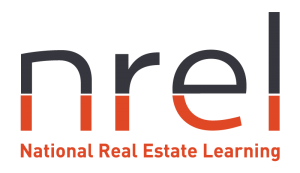Buyer’s vs Seller’s Agent: Understanding the Difference in Australia
Navigating the Australian real estate market can be a daunting task, especially if you’re unfamiliar with the roles of different agents. Understanding the distinction between a buyer’s agent and a seller’s agent is crucial for anyone looking to buy or sell property. Here’s a breakdown of each role and how they function in the Australian context.
What is a Buyer’s Agent?
A buyer’s agent represents the interests of the homebuyer throughout the purchasing process. Their main goal is to help buyers find the right property that suits their needs and budget. Here are some key responsibilities of a buyer’s agent in Australia:
1. Property Search and Analysis
- Buyer’s agents leverage their knowledge of local markets to identify properties that meet the buyer’s criteria. They have access to a wide range of listings, including off-market opportunities that may not be advertised publicly.
2. Negotiation Expertise
- They negotiate on behalf of the buyer, aiming to secure the best price and terms. Their experience with the local market and negotiation tactics can be invaluable in competitive situations.
3. Guidance Through the Buying Process
- Buyer’s agents assist clients with every step of the purchasing journey, including inspections, appraisals, and liaising with solicitors and financial advisors. They provide support to ensure a smooth transaction.
4. Market Insights
- With their finger on the pulse of market trends, buyer’s agents can provide insights into pricing, upcoming developments, and overall market conditions, helping buyers make informed decisions.
What is a Seller’s Agent?
In contrast, a seller’s agent (or listing agent) represents the interests of the home seller. Their primary objective is to secure the best possible sale price for the property. Here are the main functions of a seller’s agent in Australia:
1. Property Listing and Marketing
- Seller’s agents create comprehensive listings that include professional photos, detailed descriptions, and marketing strategies to attract potential buyers. They utilise platforms like realestate.com.au and Domain to maximise exposure.
2. Setting the Right Price
- They conduct thorough market analyses to recommend an optimal listing price, considering recent sales data and current market conditions.
3. Negotiation and Handling Offers
- When offers are made, seller’s agents negotiate on behalf of the seller to ensure the best terms and conditions are achieved. Their skills in negotiation can significantly impact the final sale price.
4. Managing the Sales Process
- Seller’s agents coordinate viewings, open houses, and communication with potential buyers. They also assist with paperwork and ensure compliance with legal requirements throughout the process.
Key Differences at a Glance
| Aspect | Buyer’s Agent | Seller’s Agent |
| Represents | Buyer | Seller |
| Primary Goal | Find the right property at the best price | Achieve the highest sale price |
| Responsibilities | Property search, negotiation, process guidance | Listing, marketing, pricing, negotiations |
| Market Knowledge | In-depth understanding of buyer preferences and trends | In-depth understanding of local market dynamics |
Understanding the distinct roles of buyer’s agents and seller’s agents is essential for anyone looking to buy or sell property in Australia. Whether you’re a first-time buyer seeking guidance or a seller aiming to maximise your sale price, knowing who to partner with can make a significant difference in your real estate experience. By leveraging the expertise of the right agent, you can navigate the complexities of the market with confidence and ease.



